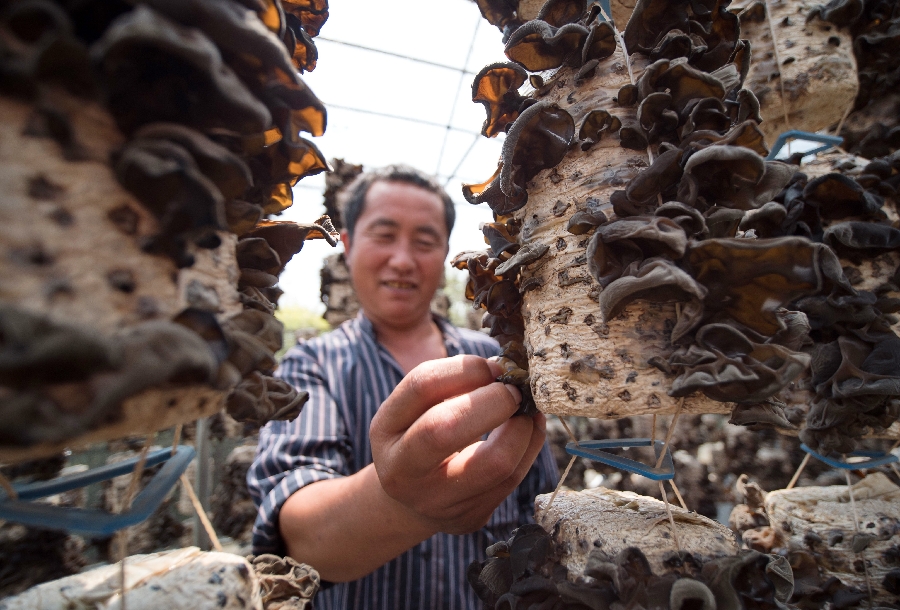
A villager picks wood ears at a greenhouse in Cuizhuang Village of Wuyi County, north China's Hebei Province, June 17, 2017. The fungus has long been a popular ingredient in many Chinese dishes and also used in Chinese medicine. (Xinhua)
NANJING, Feb. 28 (Xinhua) -- An international research team has conducted comparative gene research on three types of domesticated varieties of wood ear and determined the gene expression levels that show the nutrition of the economically important edible mushroom.
The research was conducted by scientists from the Suzhou Institute of Biomedical Engineering and Technology under the Chinese Academy of Sciences and Oxford University in the U.K.
They believe the research will not only help provide molecular guidance for breeding and cultivating the mushroom but also explain the pharmaceutical properties in the species used in traditional Chinese medicine for its anti-tumor effects.

Photo taken on Dec. 6, 2018 shows a wood-ear dish in central China's Hubei Province. (Xinhua)
They selected three types of wood ear with smooth, partially wrinkled and fully wrinkled surfaces. All of them have wild origins and were domesticated. The scientists found that they could trace the fully wrinkled wood ear's origin to the wild species from northern China, and the other two types originated from southern China.
A majority of the 13,937 universal genes in the wood ear are annotated with known anti-tumor functions. There are another 1,124 unannotated genes, with 627 of them detected in all three varieties of wood ear.
Scientists found that the fruiting bodies of the wood ear produce bioactive molecules with pharmaceutical properties including anti-oxidant, anti-proliferation and anti-tumor activities. The fruiting bodies with different wrinkles contain different combinations of bioactive substances.
The research results were published in the latest issue of the international science journal Scientific Reports.
Wood ear is widely cultivated in China's Jilin, Heilongjiang, Henan and Hubei provinces. It is consumed in China both as food and as a medicine, cited in traditional Chinese medicinal doctrines to have effects in treating anemia, nourishing the lungs, promoting blood circulation and dissolving stasis.
Gao Shan, a member of the Suzhou Institute of Biomedical Engineering and Technology, said the team has a lot of follow-up work to make a comparative analysis of the pharmaceutical properties in wood ear in order to conduct selective breeding and refine their properties for medical use. Enditem



